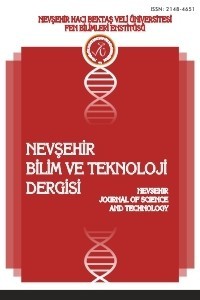The Evaluation of residual chlorine from well drinking water in some quarters in Erbil city-North Iraq.
Abstract
The study was conducted in Erbil city north of Iraq. Everywhere in
the world, the drinking water utilities face the challenge of providing water
of good quality to their consumers as significant water quality changes can
occur within drinking water distribution systems due to contamination. From
this study, we have collected water samples from twenty well drinking waters in
some quarters from Erbil City with three replicas. Our results showed that the
maximum value of free chlorine recorded in (Badawa and Galawesh) quarters which
were greater than 0.5, while, the values of free chlorine of most quarters were
less than 0.2, which were not within the recommended safe residual chlorine
level of 0.2–0.5mg/l.
Keywords
References
- :Acher, A .J. Sunlight photooxidation of organic pollutants in wastewater (1985). Water Science and Technology, 17, pp.623-632.Alsheyab, M.A. and Munoz, A.H. (2006). Reducing the formation of trihalomethanes (THMs) by ozone combined with hydrogen peroxide (H2O2/O3). Desalination, 194, pp.121-126.Boccelli DL, Tryby ME, Uber JG, Summers RS (2003). A reactive species model for chlorine decay and THM formation under rechlorination conditions. Water Res 37:2654–2666.Carrico B, Singer PC (2009). Impact of booster chlorination on chlorine decay and THM production: simulated analysis. J Environ Eng ASCE 135 (10):928–935.Clark R M. (2012). Water quality modeling. American Water Works Association, USA.Cotton, F.A. and Wilkinson, G. (1988). Advanced Inorganic Chemistry, Fifth Edition, John Wiley and Sons, New York.Gauthier,V.; Besner M-G; Barbeau, B; Millette, R and Prèvost, M. (2000). Storage tank management to improve drinking water quality: Case study. J.Water.Resour.Plng. and Mgmt.126 (4): 221-228. https://www.water-id.com/html/index.phpMc Guire, M.J. (2013). The Chlorine Revolution: Water Disinfection and the Fight to Save Lives. AWWA: Denver, Colorado.Shihab MS, Alhyaly AI, Mohammad MH (2009) Simulation of Chlorine concentrations in Mosul University’s Distribution Network using EPANET program. J Al-Rafidain Eng 17(6):28–41.Trussell, R.R., (1999). An Overview of Disinfectant Residuals in Drinking Water Distribution Systems, J. Water SRT – Aqua. 48 (1): 2-10.Vasconcelos, J. J., Rossman, L. A., Grayman, W. M., Boulos, P. F. and Clark, R. M. (1997). "Kinetics of chlorine decay." Journal AWWA, 89(7), 54-65.WHO (2017). Guidelines for Drinking-water Quality, 4th Edition, Incorporating the 1st Addendum. WHO Press: Geneva, Switzerland. WHO (2018). Drinking-water Fact Sheet [Online]. Available: http://www.who.int/news-room/fact-sheets/ detail/drinking-water (accessed 10-9-18).World Health Organization, Centers for Disease Control and Prevention. de Benoist B, McLean E, Egli I, Cogswell M, eds. Worldwide prevalence of anaemia 1993–2005. Geneva, World Health Organization, 2008.Hussein et.l(2019). Phycolimnological Study On Water Bodies Of Two Major Parks In Erbil Province (North Iraq). Fresenius Environmental Bulletin.8858-8864
The Evaluation of residual chlorine from well drinking water in some quarters in Erbil city-North Iraq.
Abstract
The study was conducted in Erbil city north of Iraq. Everywhere in
the world, the drinking water utilities face the challenge of providing water
of good quality to their consumers as significant water quality changes can
occur within drinking water distribution systems due to contamination. From
this study, we have collected water samples from twenty well drinking waters in
some quarters from Erbil City with three replicas. Our results showed that the
maximum value of free chlorine recorded in (Badawa and Galawesh) quarters which
were greater than 0.5, while, the values of free chlorine of most quarters were
less than 0.2, which were not within the recommended safe residual chlorine
level of 0.2–0.5mg/l.
Keywords
References
- :Acher, A .J. Sunlight photooxidation of organic pollutants in wastewater (1985). Water Science and Technology, 17, pp.623-632.Alsheyab, M.A. and Munoz, A.H. (2006). Reducing the formation of trihalomethanes (THMs) by ozone combined with hydrogen peroxide (H2O2/O3). Desalination, 194, pp.121-126.Boccelli DL, Tryby ME, Uber JG, Summers RS (2003). A reactive species model for chlorine decay and THM formation under rechlorination conditions. Water Res 37:2654–2666.Carrico B, Singer PC (2009). Impact of booster chlorination on chlorine decay and THM production: simulated analysis. J Environ Eng ASCE 135 (10):928–935.Clark R M. (2012). Water quality modeling. American Water Works Association, USA.Cotton, F.A. and Wilkinson, G. (1988). Advanced Inorganic Chemistry, Fifth Edition, John Wiley and Sons, New York.Gauthier,V.; Besner M-G; Barbeau, B; Millette, R and Prèvost, M. (2000). Storage tank management to improve drinking water quality: Case study. J.Water.Resour.Plng. and Mgmt.126 (4): 221-228. https://www.water-id.com/html/index.phpMc Guire, M.J. (2013). The Chlorine Revolution: Water Disinfection and the Fight to Save Lives. AWWA: Denver, Colorado.Shihab MS, Alhyaly AI, Mohammad MH (2009) Simulation of Chlorine concentrations in Mosul University’s Distribution Network using EPANET program. J Al-Rafidain Eng 17(6):28–41.Trussell, R.R., (1999). An Overview of Disinfectant Residuals in Drinking Water Distribution Systems, J. Water SRT – Aqua. 48 (1): 2-10.Vasconcelos, J. J., Rossman, L. A., Grayman, W. M., Boulos, P. F. and Clark, R. M. (1997). "Kinetics of chlorine decay." Journal AWWA, 89(7), 54-65.WHO (2017). Guidelines for Drinking-water Quality, 4th Edition, Incorporating the 1st Addendum. WHO Press: Geneva, Switzerland. WHO (2018). Drinking-water Fact Sheet [Online]. Available: http://www.who.int/news-room/fact-sheets/ detail/drinking-water (accessed 10-9-18).World Health Organization, Centers for Disease Control and Prevention. de Benoist B, McLean E, Egli I, Cogswell M, eds. Worldwide prevalence of anaemia 1993–2005. Geneva, World Health Organization, 2008.Hussein et.l(2019). Phycolimnological Study On Water Bodies Of Two Major Parks In Erbil Province (North Iraq). Fresenius Environmental Bulletin.8858-8864
Details
| Primary Language | English |
|---|---|
| Subjects | Engineering |
| Journal Section | Araştırma Makalesi |
| Authors | |
| Publication Date | June 1, 2020 |
| Acceptance Date | February 13, 2020 |
| Published in Issue | Year 2020 Volume: 9 Issue: 1 |


